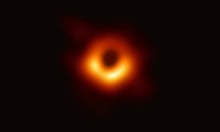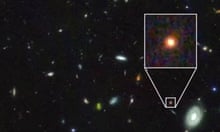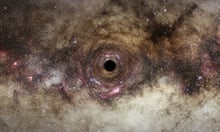It’s not actually a photo of a black hole
This week, scientists produced the first real image of a black hole, in a galaxy called Messier 87. The image is not a photograph but an image created by the Event Horizon Telescope (EHT) project. Using a network of eight ground-based telescopes across the world, the EHT collected data to produce the image. The black hole itself is unseeable, as it’s impossible for light to escape from it; what we can see is its event horizon. The EHT was also observing a black hole located at the centre of the Milky Way, but was unable to produce an image. While Messier 87 is further away, it was easier to observe, due to its larger size.
Event horizon
The golden ring is the event horizon, the moment an object approaching a black hole reaches a point of no return, unable to escape its gravitational pull. Objects that pass into the event horizon are thought to go through spaghettification, a process, first described by Stephen Hawking, in which they will be stretched out like a piece of pasta by gravitational forces.
The hole in the centre
Heino Falcke, professor of radio astronomy and astroparticle physics at Radboud University in Nijmegen, and chair of the EHT science council, says the image shows a silhouette of the hole against the surrounding glow of the event horizon, all of the matter being pulled into the hole. At the centre of the black hole is a gravitational singularity, where all matter is crushed into an infinitely small space.
How big is the black hole?
The black hole lies 55m light years away from us. It is around 100bn km wide, larger than the entire solar system and 6.5bn times the mass of our sun.
What does this mean for physics?
Through creating an image of a black hole, something previously thought to be impossible, the EHT project has made a breakthrough in the understanding of black holes, whose existence has long been difficult to prove. The image will help physicists to better understand how black holes work and images of the event horizon are particularly important for testing the theory of general relativity.










Comments (…)
Sign in or create your Guardian account to join the discussion